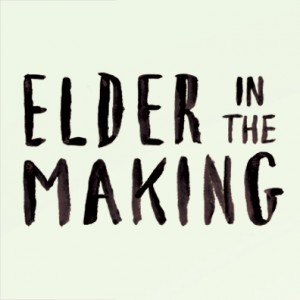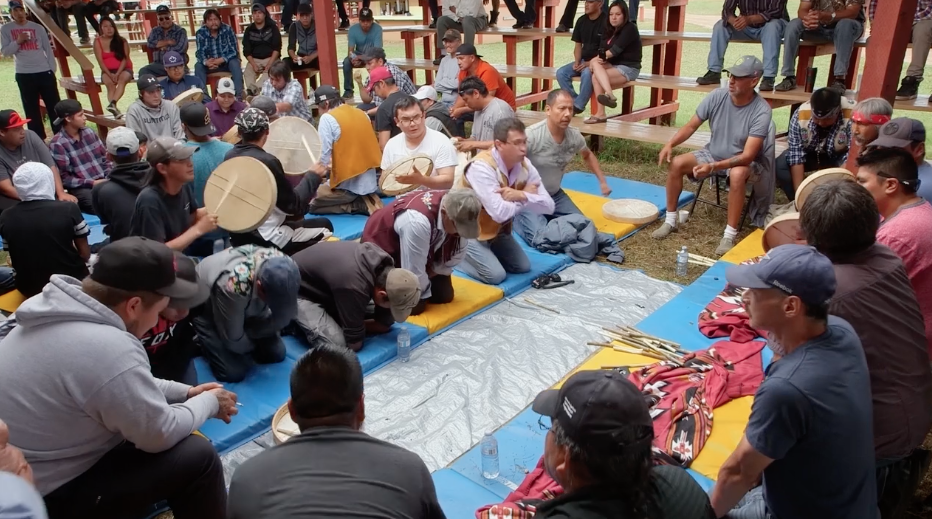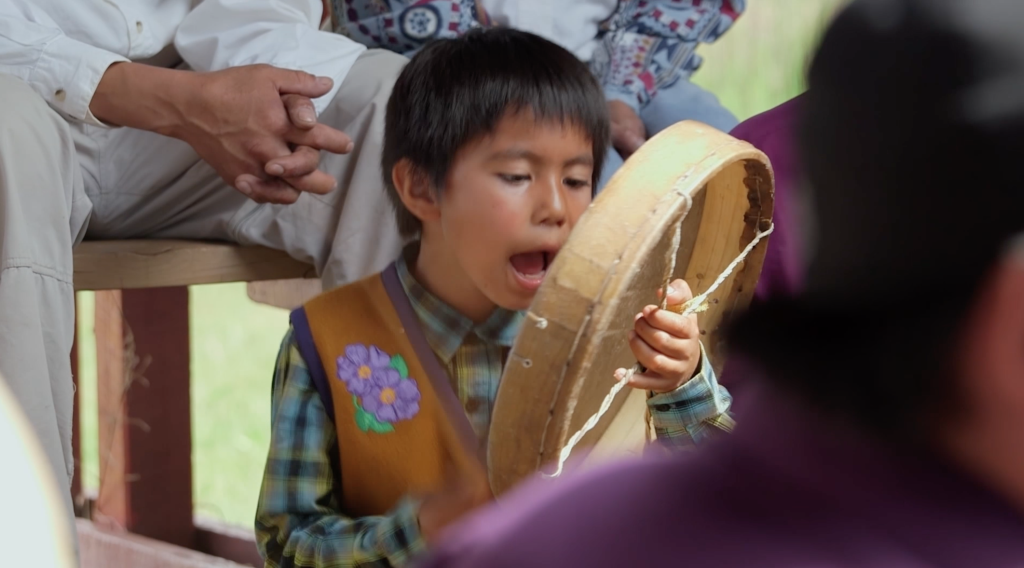Many of the games we play today are derived from the traditional games of Indigenous People. Men and women usually played separately, and children played simplified versions of the adult games. Traditionally, there are two common types of games: games of chance and games of skill.
Games of Chance
The Hand Game
The Hand Game was very popular among Indigenous peoples, and rules varied among different tribes. One variant of the game – The first player hides a small object in one hand and holds their hands behind their back or under a robe to conceal it from the the other player. The other player watches the movements closely and then makes a gesture indicating their guess of which hand holds the object. When a player has guessed correctly, the next person takes their turn to hide the object.
The Moccasin Game
The Moccasin Game was played with an object that was concealed in one of four moccasins, it was played with two players or two teams. The purpose of the game was to get the opposing player to guess which moccasin the object was hidden in. This game was popular in Western Canada during the winter months.
The Stick Game
The Stick Game is played with two people, and 21 twigs or pieces of sweet grass, each similar in length. The bundle of sticks is rolled between the palms of one player and then divided into two bundles, one held in each hand. The arms are crossed and presented before the opponent to choose one of the bundles, the objective was to chose the bundle with the even number of sticks. If the other player picked the bundle with the even number, their opponent divided the sticks again, if the player picked an odd number, the bundle of 21 goes to their opponent and the game continues until one player picks an even bundle three times in a row. The player who chose the even bundle three times in a row then spreads the sticks on the ground and picks up a handful – if an even number of sticks is picked again, the player wins the game.
Games of Skill
Ball Games
Ball games involved agility, teamwork and skills in running, passing, and throwing – many of these games involved hitting or passing the ball with a stick, meaning players had to be alert to avoid blows from their opponents. Three popular versions of ball games were played: Lacrosse, Shinny, and Keep Away, occasionally nations would compete against one another in these games.
Lacrosse
Lacrosse is one of the oldest athletic competitions and has been played by Indigenous peoples for generations. The original game of Lacrosse was a contest between two villages or tribes, with up to 500 – 600 players on each team playing over a field that could vary from several hundred metres to several kilometres in size. The game had one simple rule; the ball could only be moved with the lacrosse stick. Beyond this rule, the game was played with an equal number of players on each team, there was not a limit to the number of athletes that could be goal tenders, or play offensive and defensive positions.
Contests of Strength and Endurance
Contests of strength and endurance were held often and wagers were placed on their outcome. Wrestling games had several versions, but in all cases the loser was the first one to fall to the ground, and two falls were necessary to win a bout. Another version of wrestling was to lock fingers at arm’s length with each contestant trying to pull the other forward. Foot races were very common and took place on courses that were several miles long.
Target Games
Target games involved skill development for hunting and were frequently played by young men. Indigenous communities held good hunters in high esteem because they provided food, clothing, and other necessities for the community. Hunting skills were developed at an early age through games and activities, the purpose was to to develop hand-eye coordination to improve accuracy with the bow and arrow.
ACTIVITY: Try this game with your kids
Run and Scream
This Blackfoot game was traditionally played with each player taking turns. It teaches tolerance and patience, and also builds lung capacity which is beneficial in everyday life.
Participants begin by taking in a big breath of air. They start running while screaming loudly. When the students run out of breath and can no longer scream, they must stop running and mark the ground using a marking stick, rock, or bean bag. The participants will continue to play, each time trying to improve on their previous distance. Use this activity as a benchmark, then ask the participants to discuss why games like this we’re importance for Indigenous culture. What skills does it build on what would it help with?other techniques that might improve their lung capacity. As participants get used to the activity, encourage them to use different locomotor skills like skipping, galloping, and hopping to move across the activity area.


